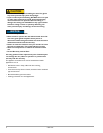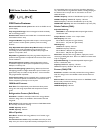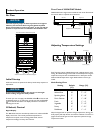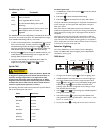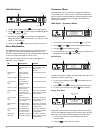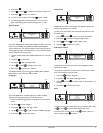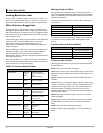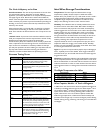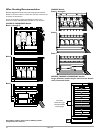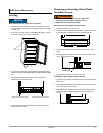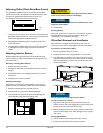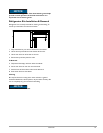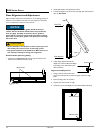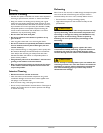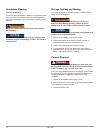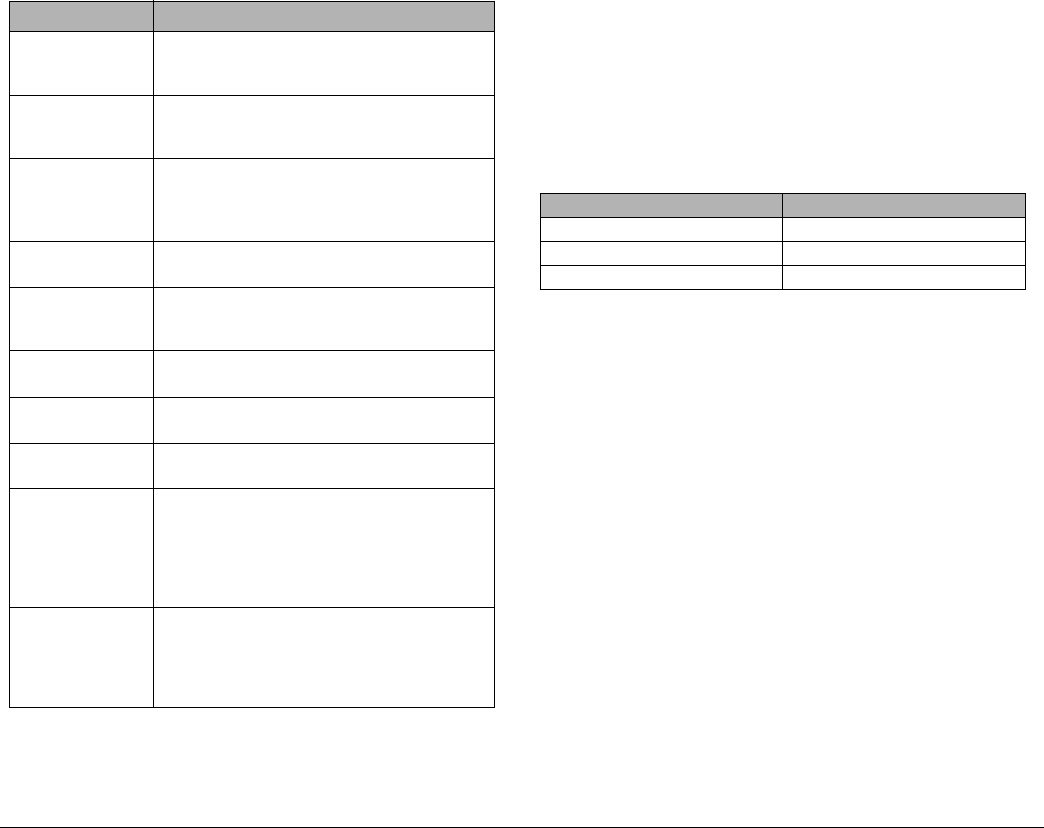
u-line.com 9
The Cork: A Mystery on Its Own
Cork Presentation. The ritual of the presentation of the cork has a
rich and fascinating history dating back to the late 1800’s. A
phylloxera (root louse) devastation to the vineyards severely limited
the supply of great wines. Restaurateurs would remove labels on
inferior wines and replace them with labels from superior wines. This
made it necessary for patrons to protect themselves by checking the
branding on the cork to ensure that what they ordered was, in fact,
what they were served.
When presented with a cork today, feel it to check for its integrity,
read and match the branding on the cork to the bottle and set it
aside. There is little to be learned from the cork. The proof is in the
wine.
“Corked” wines. If you’ve ever had a wine that smelled or tasted of
mold, you’ve experienced a wine that may have been “corked.” Today,
between five and eight percent of wines are tainted with
Trichloroanisole (TCA). This substance, found naturally in plants and
trees, is imparted to the wine through the cork. Corked wines are a
major concern for winemakers as it destroys millions of cases per
year and puts reputations at stake. Amazing as it may seem twist-off
caps may offer a better alternative and many great wineries in
California, Australia and New Zealand are pioneering the trend.
Common Tasting Terms
Ideal Wine Storage Considerations
Temperature: The most important element about storage
temperature is stability. If wine is kept in a stable environment
between 40°F (7°C) and 65°F (21°C), it will remain sound. A small 1-
2 degree temperature fluctuation within a stable environment is
acceptable. Larger temperature fluctuations can affect the corks
ability to seal, allowing the wine to “leak” from the bottle.
Humidity: The traditional view on humidity maintains that wines
should be stored on their sides in 50% - 80% relative humidity to
ensure cork moisture and proper fit in the bottle. Contemporary
wisdom suggests that the cork surface is too small to be impacted by
humidity. Further the cork is sealed with a metal or wax capsule
making humidity penetration impossible. The concept of a humid
storage environment was derived from the necessity of wineries to
maintain moisture in their cellars to keep wooden barrel staves
swollen, preventing wine evaporation and product loss. In fact,
vineyards estimate as much as a 10% product loss per year due to
evaporation while wine is aging in the wooden barrels. Humidity,
however, was not intended for the modern home cellar where wine
is stored in glass bottles with sealed corks.
Light: UV rays are not only harmful to people, they are damaging to
wines - especially those in clear bottles. Since oxygen molecules in
wine absorb UV rays, wine should never be stored in direct light for
long periods of time.
Vibration: Provided that sediment is left undistributed and particles
are not suspended, vibration in a storage environment is not an issue.
Wines can become flat or tired when voids and vacuums are created
inside the wine bottle. In order to create voids and vacuums within a
liquid, aggressive motion or shaking of the wine bottle would have to
occur.
The Right Temperature for Wine
Wine Captain
®
Models - A Touch of Elegance
In 1985 U-Line was the first North American appliance manufacturer
to develop a residential wine storage unit, the Wine Captain
®
. Each
U-Line Wine Captain
®
model is designed to impress and inspire
anyone with an interest in wine by providing cellar conditions in
stylish, undercounter units. U-Line Wine Captain
®
models offer
stable storage temperatures, a 50% internal relative humidity and
protection from UV light rays. U-Line has the largest product offering
available, making storing, presenting, and sharing your wine effortless
and elegant.
Term i n o l o g y Description
Acidity A critical element of wine that is responsible for
preserving the wines freshness. Excess acidity
results in an overly tart and sour wine.
Balance A desired trait where tannin, fruit and acidity are
in total harmony. Wines with good balance tend
to age gracefully.
Body The weight and presence of wine in the mouth
provided by the alcohol and tannin level. Full-
bodied wines tend to have this strong
concentration.
Bouquet The blending of a wine’s aroma within the bottle
over a period of time, caused by volatile acidity.
Complex A subjective term often used in tasting. A wine is
said to be complex if it offers a variety of flavors
and scents that continue to evolve as it develops.
Flabby A wine that lacks structure, or is heavy to the
taste, lacks acidity.
Full-Bodied Wine high in alcohol and extract, generally
speaking, fills the mouth, powerful.
Lean Generally describes wines that are slim, lacking of
generosity or thin.
Oaky A desirable flavor imparted to wine if done in
moderation. Most wines are aged in oak barrels
one to three years, thereby receiving this toasty
oak characteristic. However, if a weak wine is left
in contact too long with an oak barrel it will tend
to be overpowered with an oaky taste.
Tannin Tannins are extracted from the grape skins and
stems and are necessary for a well-balanced red
wine. Tannins are easily identified in wine tasting
as the drying sensation over the gums. Tannins
generally fade as a wine ages.
Temp eratu re Wines
Approximately 60°F (15°C) Red
50°F - 55°F (10°C -12°C) White
Approximately 45°F (7°C) Sparkling




